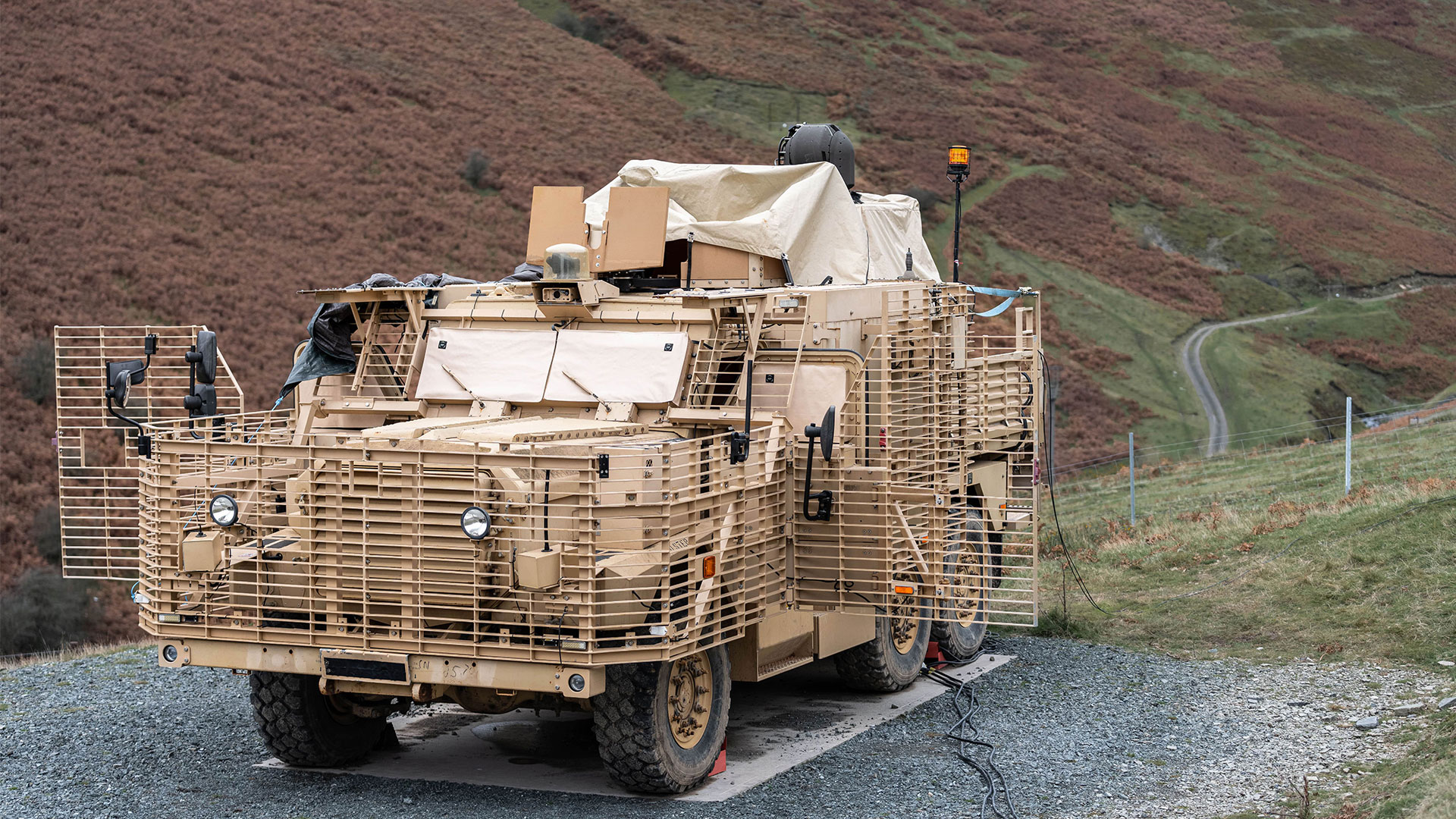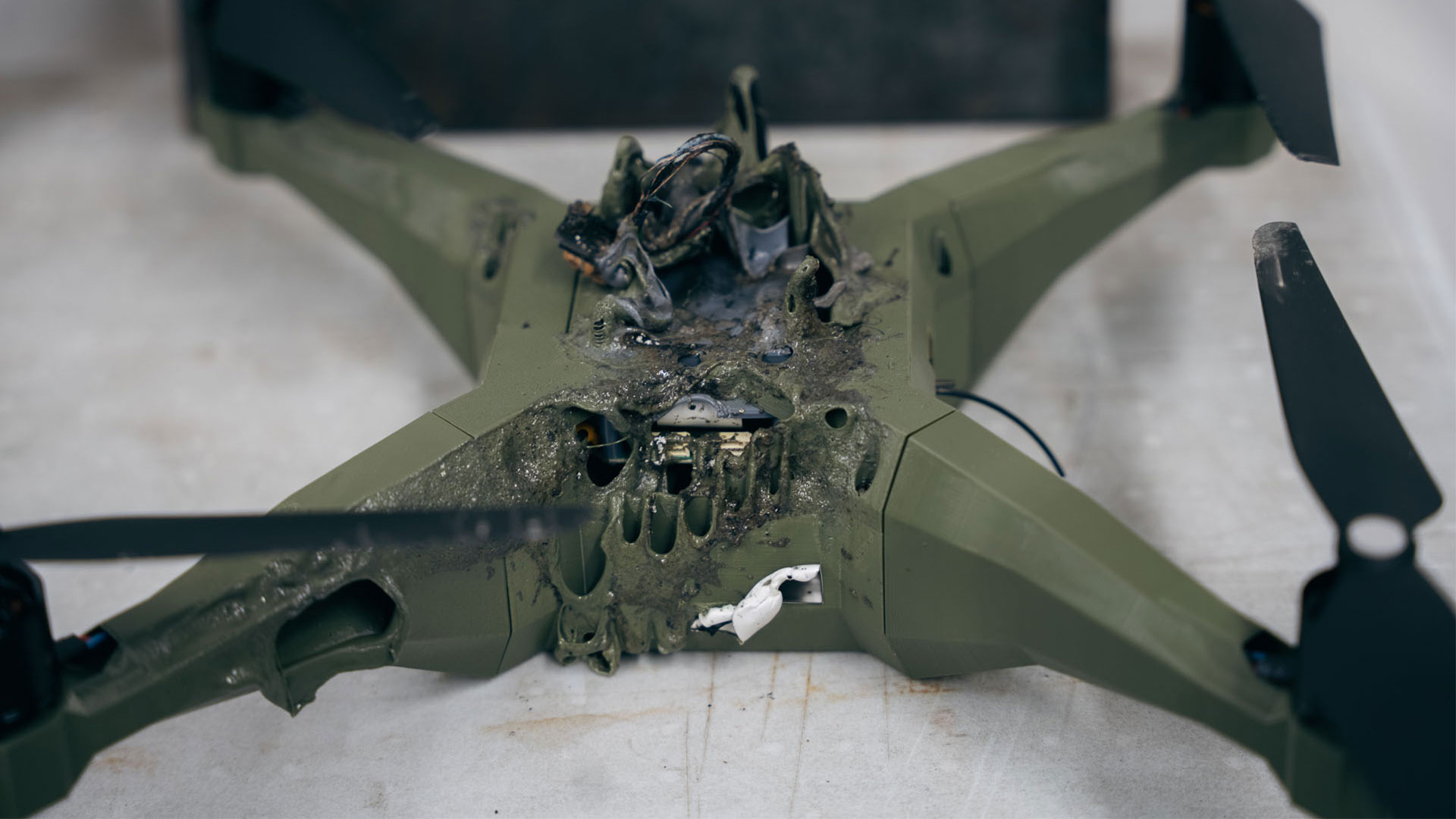UK's Wolfhound mobile laser weapon exhibits 100% drone zapping success in field trials
A high-energy laser weapon was integrated with the armored vehicle by a consortium led by Raytheon.

Field tests of the British Army's newest drone-destroying mobile laser weapon have reportedly enjoyed great success. The Wolfhound high-energy laser weapon system (HELWS) is an armored troop-carrying vehicle with an integrated laser, leveraging "advanced sensors and tracking systems" to target and knock out drones with surprising speed. Drones are an increasing threat in war zones, around airports, and in places like New Jersey, so the development of quick and capable anti-drone weapons is increasingly essential.
The laser-toting Wolfhound was tested recently at the Radnor Range in mid-Wales. Its operation relies on accurately concentrating a high-power laser on an in-flight drone until it malfunctions and drops from the sky. This is why the advanced sensors and tracking are essential, but from the video above it looks like skilled human operators play an important part, too.
According to the Ministry of Defence (MOD) press release, the merging of a Wolfhound-protected troop-carrying vehicle and HWLWS was completed by MOD technical departments in partnership with an industry consortium led by Raytheon UK.
"Every engagement we’ve done has removed a drone from the sky. While we’ve been testing a variety of distances, speeds, and altitudes, one thing has remained – how quick a drone can be taken out," enthused Warrant Officer Matthew Anderson, the trials manager for the British Army’s Mounted Close Combat Trials and Development Group. "It’s definitely a capability that could be added to the arsenal of weapons that we use on the battlefield."
An MOD exec added that the ability to deploy a mobile drone tracking and elimination system will deliver an operational advantage to the British Army. However, the system as demonstrated doesn't appear to be a finished combat-ready system, as yet. Instead, the Wolfhound HELWS is described as a "demonstrator," by the top brass, and characterized as a step towards a future capability.

With the Wolfhound HELWS's touted abilities, cost-effectiveness, and efficiency in dispatching errant drones we hope bean counters at the MOD can find the funds down the back of the sofa to protect British and allied troops from swarms of unmanned autonomous (or remotely controlled) threats.
Stay On the Cutting Edge: Get the Tom's Hardware Newsletter
Get Tom's Hardware's best news and in-depth reviews, straight to your inbox.

Mark Tyson is a news editor at Tom's Hardware. He enjoys covering the full breadth of PC tech; from business and semiconductor design to products approaching the edge of reason.
-
newtechldtech Replybut from the video above it looks like skilled human operators play an important part, too.
Nope. that operator is controlling the drone with the joystick not the laser.
more over , this system is a total failure ... is very slow and cant handle a swarm , like 10+ drones at once ...
The best way to down ALL drones nearby is Electromagnetic defense with blind targeting sphere of influence . lasers cant handle all of them at once and is very expensive and very power hungry. and they should test them against drones with mirror protection as well (Military grade protection). -
jg.millirem I want consumer/business/scientific hardware coverage, not military, which is a bottomless pit of death and power projection in this broken world.Reply -
helper800 Reply
Technically a LASER is an "Electromagnetic" defense. What do you mean specifically when you say that?newtechldtech said:Nope. that operator is controlling the drone with the joystick not the laser.
more over , this system is a total failure ... is very slow and cant handle a swarm , like 10+ drones at once ...
The best way to down ALL drones nearby is Electromagnetic defense with blind targeting sphere of influence . lasers cant handle all of them at once and is very expensive and very power hungry. and they should test them against drones with mirror protection as well (Military grade protection). -
USAFRet Reply
Just like everything else, baby steps.newtechldtech said:more over , this system is a total failure ... is very slow and cant handle a swarm , like 10+ drones at once ... -
why_wolf eh really depends on how many targets at once and how quickly it can down them. I'll go out on a limp and guess its much slower than something like a Phalanx CIWS. I guess also what size drones are we talking about, little quad copters or something the size of a Predator drone?Reply
While radio jamming is helpful, its only useful against remote controlled drones. If the drone is autonomous its far less effective. For the most advanced drones that have terrain mapping data or object recognition its completely useless.
The old german Gepard seems to be exactly the kind of mobile anti-air system you'd want for anti-drone warfare. They just need to make new models of that. No need to reinvent the wheel, a lead shield does the job. -
edzieba Reply
Gepard and similar existing SPAAG systems are too expensive: cost to take down a drone (multiple rounds expended) exceeds the cost of the drone, as per the experience in live combat in Ukraine. SPAAGs themselves are also inflexible: they require a long logistics train to operate and can do little else than take down drones in today's battlefields - ineffective against full-sized aircraft and cruise missiles, hence why they were abandoned in the first place.why_wolf said:The old german Gepard seems to be exactly the kind of mobile anti-air system you'd want for anti-drone warfare. They just need to make new models of that. No need to reinvent the wheel, a lead shield does the job.
The advantage of laser-based CIWS is that cost per shot is very very low, and logistics train is very simple - whatever you fuel the genset with, no special-purpose rounds required.
They do not need to take down large UAVs (Predator et al) or take down mythical drone swarms: the system needs to be able to sit within an existing combat group (and ideally be able to be mounted to existing vehicles) and take down individual drone attackers, as that is what has proven to be the threat in actual live combat. Against large UAVs, existing theatre-level air defence can continue doing its job.
The best way to think about the modern drone threat is as lower cost and slower flying TV-guided missiles, because in practical deployment that is exactly what they are used as. That comes with all the downsides of TV-guided missiles - mainly that you need an operator for each munition in flight and need to maintain a data link (so either EW superiority or optical fibre guidance limiting range).
Want to make your drones faster and able to target autonomously? Congratulations! You've just re-invented the anti-tank missile, and all the reason you were not using anti-tank missiles in the first place still apply (mainly cost, production capability, and production capacity). -
bit_user Reply
What's the target acquisition time? How long does it take to knock out a drone, once targeted?newtechldtech said:this system is a total failure ... is very slow and cant handle a swarm , like 10+ drones at once ...
As for the swarm problem, that can be addressed by scaling the number of your defensive units and adding some communication so they can coordinate. If the system can be shrunk (and what 1st gen technology demo can't?), then you could equip each vehicle with multiple turrets.
There are other wavelengths that could be used, including microwaves (MASER). I don't know how much power you can get out of a MASER, though.newtechldtech said:they should test them against drones with mirror protection as well (Military grade protection).
Another possibility is to use the laser to direct a guided missile, of sorts. The missile could contain an explosive warhead, rely on kinetic force, or perhaps even deploy a net on the target. -
newtechldtech Reply
High electro magnetic field around the point of defense.helper800 said:Technically a LASER is an "Electromagnetic" defense. What do you mean specifically when you say that?